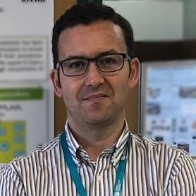Composite Photocatalytic Materials for Environmental Technologies; Water Purification and Hydrogen Generation
A special issue of Materials (ISSN 1996-1944). This special issue belongs to the section "Advanced Composites".
Deadline for manuscript submissions: closed (31 May 2020) | Viewed by 11197
Special Issue Editors
Interests: advanced water treatments, particularly advanced oxidation/reduction technologies; nanotechnology, particularly design and development of solar-active materials for water treatment and energy conversion; process simulation and optimization including mechanistic/phenomenological modeling; fate and behavior of contaminants of emerging concern using QSA/PR modeling; waste management, particularly thermal treatment technologies; microplastics, particularly fate, behavior and removal methods
Special Issues, Collections and Topics in MDPI journals
Interests: photocatalysis; photothermal catalysis; inorganic semiconductors; photoreforming; CO2 conversion
Special Issues, Collections and Topics in MDPI journals
Special Issue Information
Dear Colleagues,
Accessible clean water and energy resources are, at present, among the highest priorities sustaining economic growth and societal wellbeing. The innovative applications of nanosized materials, among others, involve the harvesting of solar irradiation to purify water and supply energy. The underlying mechanism of photocatalytic processes for water purification and photoelectrochemical processes for energy conversion is basically the same; both rely on the formation of electron/hole (e–/h+) pairs at a semiconducting material upon its excitation by light with sufficient photon energy. Harvesting a broader spectrum of solar irradiation involves lowering of the band gap of the semiconducting material whilst inhibiting the recombination of photogenerated charge carriers. Strategies include doping with nonmetals, incorporation or deposition of noble metals (ions), and material engineering solutions based on composites formation using transition metals, carbon nanotubes, dye sensitizers, conductive polymers, graphene (oxide), and semiconducting materials. Tailoring of composite materials is currently the focus of scientific research worldwide aiming at increased effectiveness, unselectivity towards target pollutants, long-term stability, and durability in solar driven processes for water purification and hydrogen generation.
This Special Issue is aimed at covering recent research and novel trends in the field of development, synthesis, preparation, characterization, and application of composite photocatalytic materials for environmental technologies; water purification; and hydrogen generation. Full papers, short communications, and reviews in the field are welcome. Mini-reviews with an overview on the state-of-the-art with future perspectives and trends in this domain will be also considered.
The Editors welcome contributions highlighting the role of composite photocatalytic materials for environmental technologies without any restrictions regarding the nature of the catalyst and the preparation method, as well as the targeted pollutants.
Prof. Hrvoje Kušić
Dr. Fernando Fresno
Prof. Ana Loncaric Bozic
Guest Editors
Manuscript Submission Information
Manuscripts should be submitted online at www.mdpi.com by registering and logging in to this website. Once you are registered, click here to go to the submission form. Manuscripts can be submitted until the deadline. All submissions that pass pre-check are peer-reviewed. Accepted papers will be published continuously in the journal (as soon as accepted) and will be listed together on the special issue website. Research articles, review articles as well as short communications are invited. For planned papers, a title and short abstract (about 100 words) can be sent to the Editorial Office for announcement on this website.
Submitted manuscripts should not have been published previously, nor be under consideration for publication elsewhere (except conference proceedings papers). All manuscripts are thoroughly refereed through a single-blind peer-review process. A guide for authors and other relevant information for submission of manuscripts is available on the Instructions for Authors page. Materials is an international peer-reviewed open access semimonthly journal published by MDPI.
Please visit the Instructions for Authors page before submitting a manuscript. The Article Processing Charge (APC) for publication in this open access journal is 2600 CHF (Swiss Francs). Submitted papers should be well formatted and use good English. Authors may use MDPI's English editing service prior to publication or during author revisions.
Keywords
- Solar photocatalysis
- Water purification
- Water splitting
- Composite photocatalyst material
- Z-scheme
- Surface plasmon resonance








